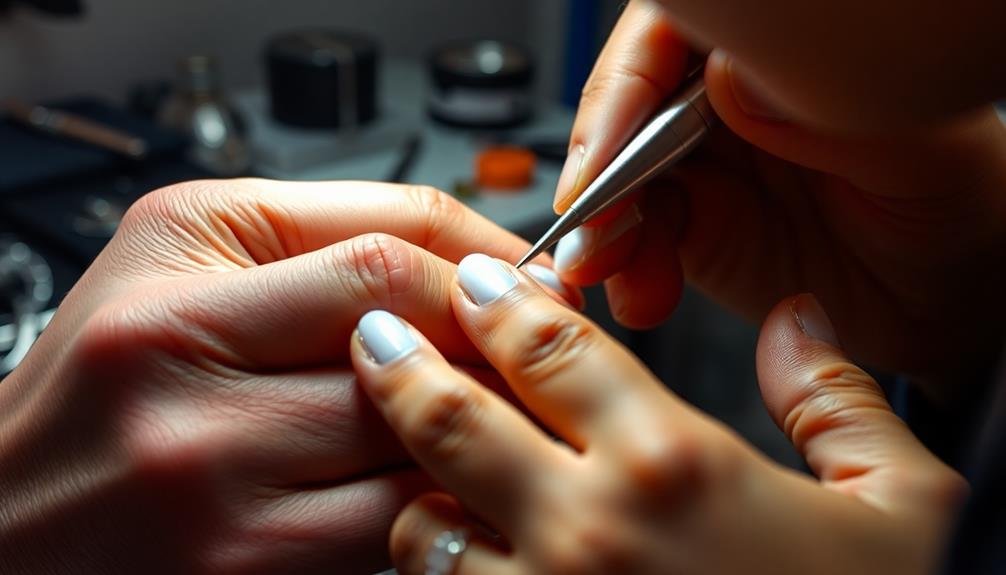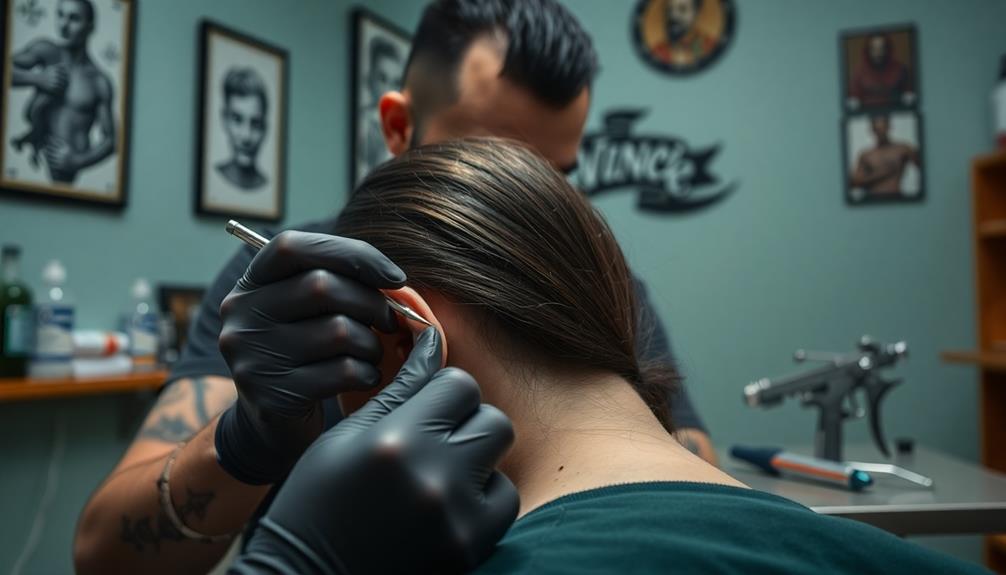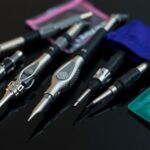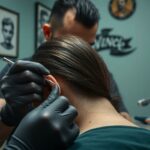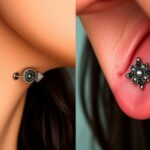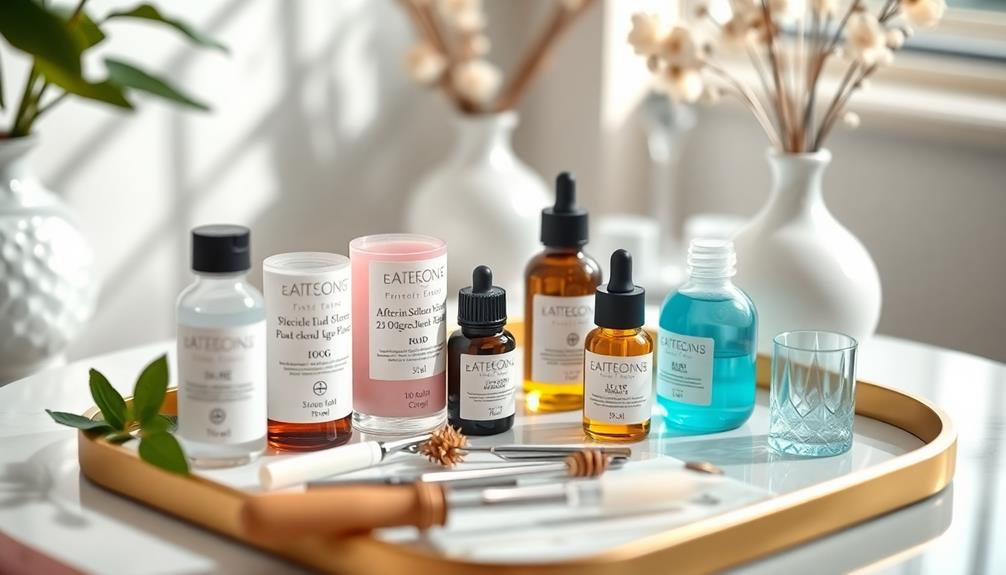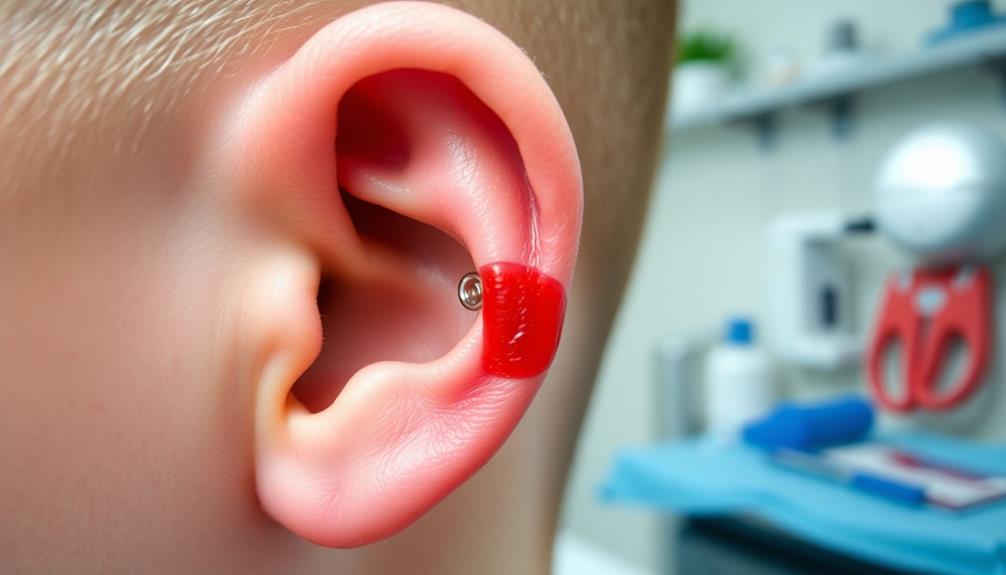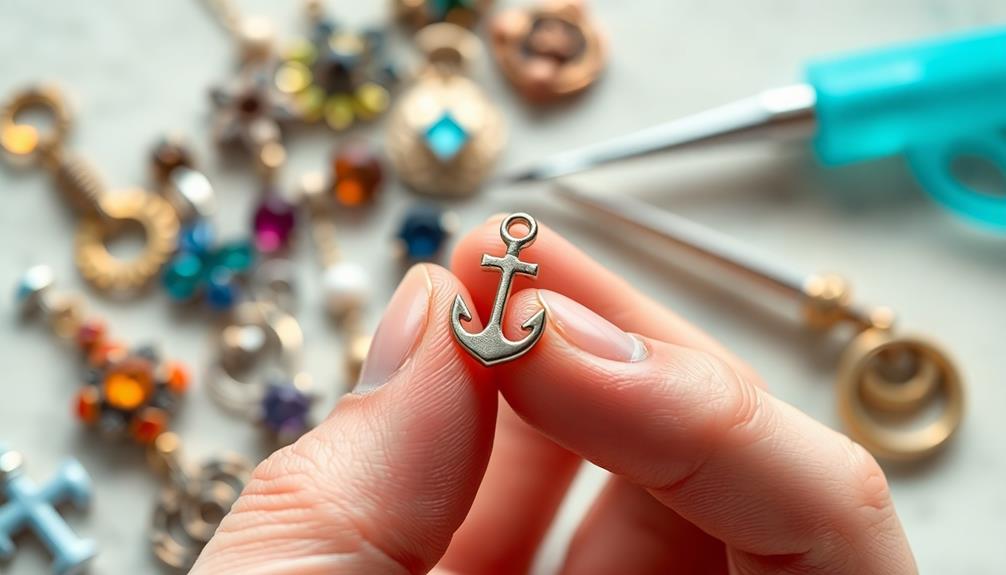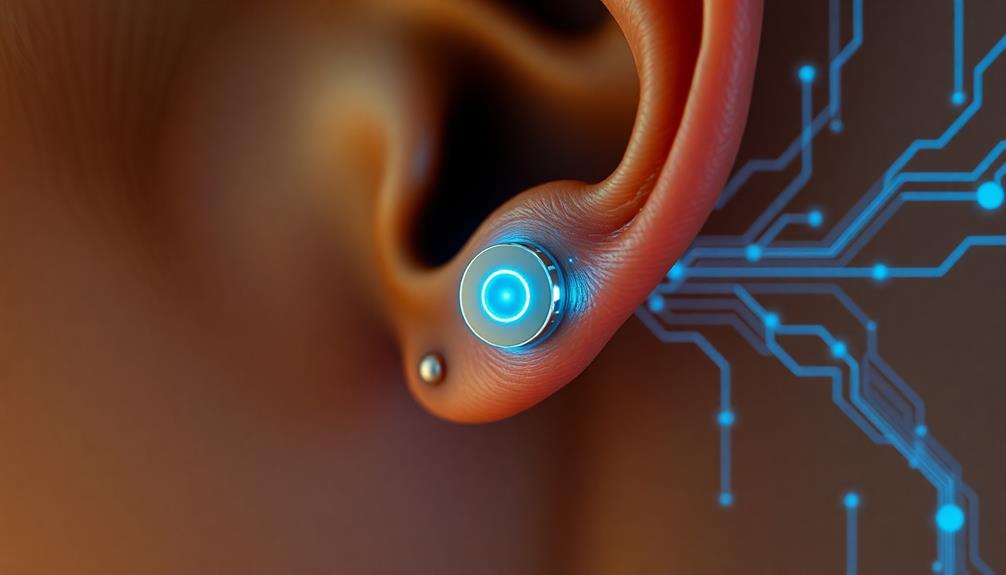Freehand piercing provides a unique, tailored experience that can enhance both comfort and aesthetics. You'll enjoy minimized tissue trauma, leading to faster healing and a more personalized placement. However, this technique heavily relies on your piercer's skill, which can affect the results. Depth control and limitations in certain areas might pose challenges too. While many appreciate the flexibility and efficiency, the variability in outcomes can be concerning. If you're intrigued by how freehand compares to other techniques and what to expect regarding aftercare, there's plenty more to explore.
Key Takeaways
- Freehand piercing minimizes tissue trauma, promoting faster healing and enhanced comfort compared to traditional methods.
- This technique allows for personalized placements and angle adjustments, catering to individual anatomy and preferences.
- Heavily reliant on the piercer's skill, freehand piercing can lead to variable outcomes and inconsistent results.
- Limited to certain body areas, freehand piercing may not be suitable for all types of piercings.
- Extensive training is required for piercers, which restricts the availability of qualified professionals skilled in this method.
Overview of Freehand Piercing
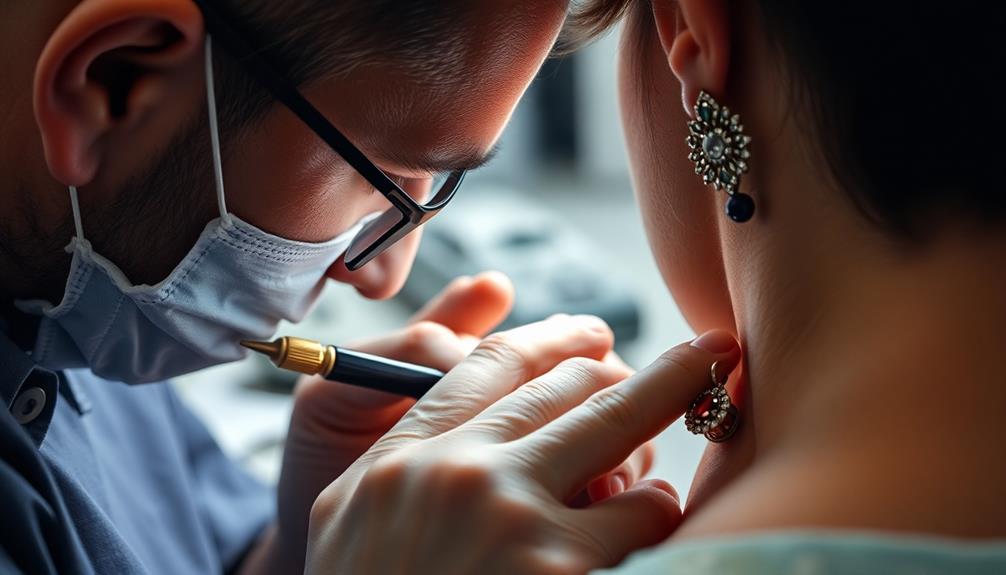
Freehand piercing is an innovative technique that eliminates the need for clamps or guides, allowing skilled piercers to rely on their precision and expertise. This method has gained traction, particularly among professional piercers keen on minimalistic piercing methods.
By forgoing traditional tools, they can achieve more natural and aesthetically pleasing piercing placements, adapting angles and depths to fit the client's anatomy.
One of the key advantages of freehand piercings is the enhanced comfort it provides. Since this technique often involves less tissue trauma, clients may experience less pain and quicker healing times compared to conventional methods that use clamps.
However, mastering freehand piercing requires extensive training and experience, as it demands a steady hand and a deep understanding of anatomy.
While it offers flexibility and artistic freedom, it's vital to note that this technique mightn't be suitable for all body areas or piercing types. The lack of a guide can limit control over depth, which is significant for specific piercings.
Ultimately, freehand piercing represents a blend of artistry and expertise, appealing to those looking for a more personalized piercing experience.
Advantages of Freehand Piercing
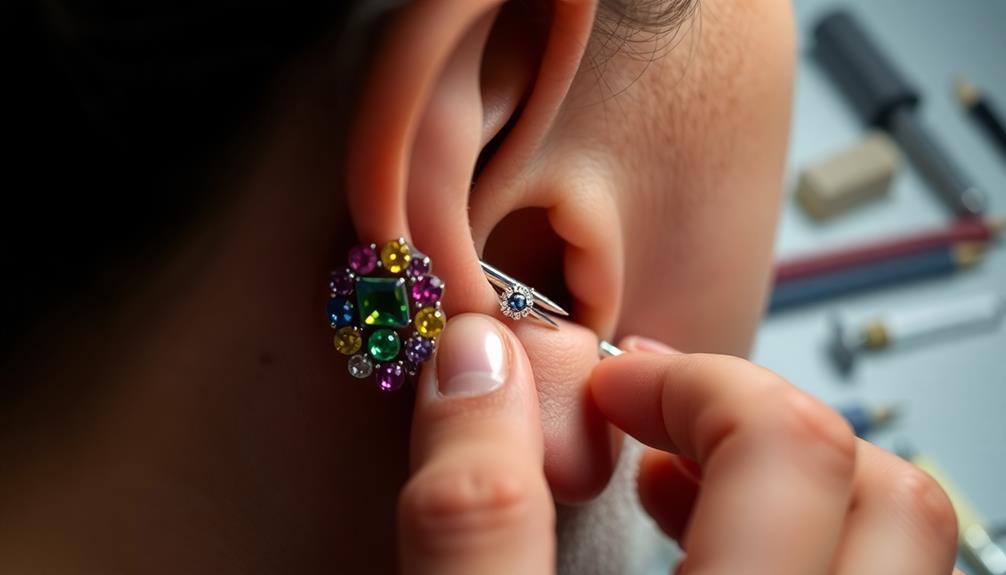
One of the standout benefits of this piercing method is how it minimizes trauma to the tissue. Unlike traditional techniques that use clamps, freehand piercing allows the professional piercer to work directly with your skin, avoiding unnecessary pressure and reducing damage to the skin. This gentler approach often results in faster healing times, as many clients report experiencing less tissue damage.
Another significant advantage is the flexibility in placement and angle that freehand techniques offer. This means your piercing can be tailored to your unique anatomy and preferences, providing a truly customized experience. With the ability to adapt during the procedure, a professional piercer can achieve a more precise and aesthetically pleasing result.
Additionally, freehand piercing promotes a simpler setup since it requires less equipment, which can enhance the overall efficiency of the procedure. The increased precision in placement not only improves healing but also yields a more visually appealing outcome, ensuring you're satisfied with your new piercing.
Disadvantages of Freehand Piercing
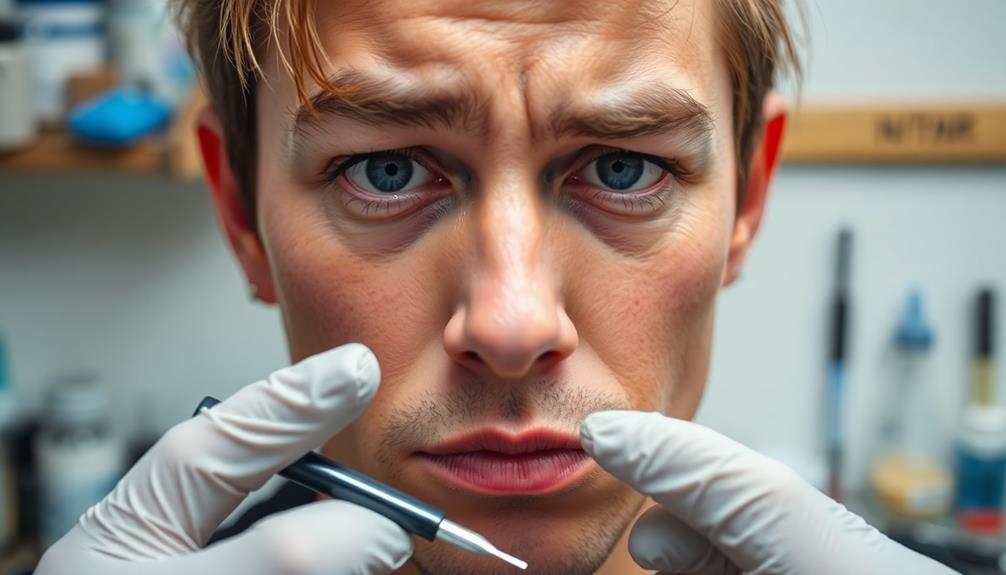
While freehand piercing offers many benefits, it also comes with notable drawbacks that should be considered. One major disadvantage is that this technique relies heavily on the piercer's skill and steadiness. If the technique isn't executed correctly, complications can arise.
Additionally, freehand piercing may not be suitable for all body areas or types of piercings, as some locations require more precision than what freehand methods provide. Without the use of clamps or guides, you have limited control over the depth of the piercing, which can lead to inconsistent results.
This lack of control can affect the overall quality of the body art, impacting both aesthetics and healing. Additionally, mastering freehand piercing demands extensive training and experience, which can limit the number of qualified professionals available to you.
The increased reliance on the piercer's ability means that outcomes can vary considerably from one professional to another. This inconsistency can affect your satisfaction and safety, especially if you're trusting someone with your body.
Consequently, it's crucial to weigh these pros and cons carefully before opting for freehand piercing.
Aftercare Recommendations
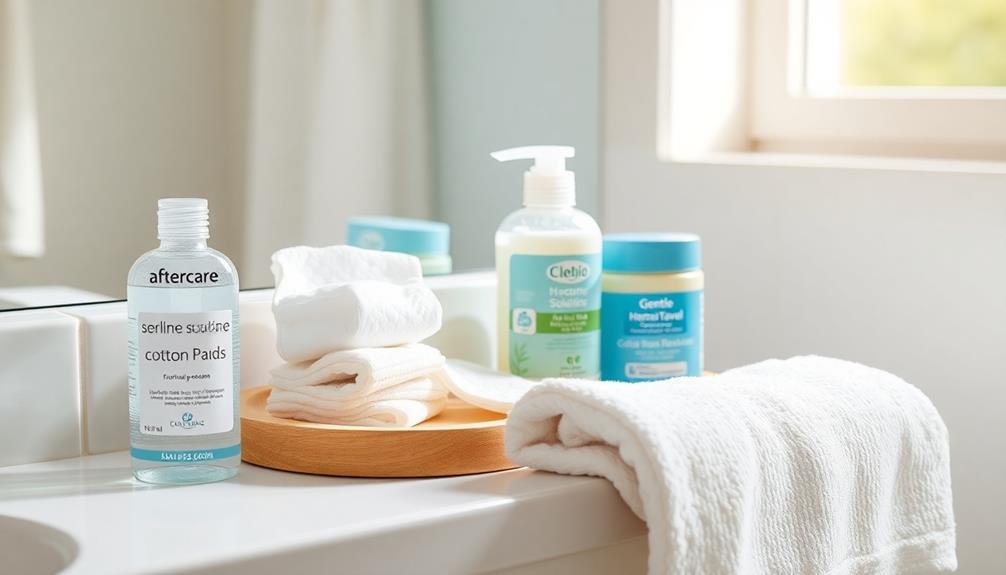
After getting a freehand piercing, proper aftercare is essential for a smooth healing process.
You'll want to use sterile saline solutions for cleaning and avoid alcohol-based products that can irritate the area.
Keep an eye out for any signs of infection, as catching issues early can make all the difference.
Essential Aftercare Products
When you get a freehand piercing, using the right aftercare products is imperative to promote healing and prevent infections. Start with a sterile saline solution, like NeilMed Neil Cleanse Wound Wash. This product helps maintain moisture and aids in the cleanliness of your piercing, ensuring a smoother healing process.
It's essential to avoid alcohol-based solutions, as they can irritate the area and hinder recovery.
If you've had an oral piercing, consider using Biotene Fresh Mint Mouthwash. It keeps your mouth clean without causing irritation, which is crucial for oral piercing aftercare. Always prioritize alcohol-free products to protect your healing tissue.
Regular follow-up care is equally important. Consult with your professional piercer to address any concerns and get tailored advice. They can guide you on using these aftercare products correctly and help you navigate the healing journey.
Cleaning Techniques and Frequency
To guarantee your freehand piercing heals properly, cleaning it at least twice daily is vital. Use sterile saline solutions, like NeilMed Neil Cleanse Wound Wash, as your primary cleaning technique. This helps maintain cleanliness and promotes efficient healing.
Apply the solution gently, making sure you're not using any alcohol-based products, which can irritate the piercing and slow down the healing process.
After applying the saline, use non-woven gauze to dab the area gently, removing any excess moisture. This step is essential for infection prevention, as it keeps the site free from bacteria and debris.
Remember to be consistent with your cleaning routine, as doing it regularly greatly reduces the risk of complications.
In addition to your daily cleaning, consider scheduling follow-up care with your professional piercer. They can provide personalized advice and address any concerns you may have during the healing period.
Staying diligent with your aftercare will help guarantee your freehand piercing heals smoothly and successfully, allowing you to enjoy your new body art without unnecessary issues.
Signs of Infection Awareness
Being vigilant about signs of infection is essential during the healing process of your freehand piercing. You'll want to closely monitor the area for symptoms like swelling, redness, pus discharge, and increased pain. These signs of infection can indicate complications that require immediate attention.
For effective aftercare, use a sterile saline solution to clean the piercing regularly. This not only helps prevent infections but also promotes ideal healing.
Don't touch the piercing with unwashed hands, as this can introduce bacteria. Additionally, avoid changing your jewelry until the piercing has fully healed, which typically takes 4 to 6 months for septum piercings.
Keep in mind that seasonal allergies can increase your risk of infection. As a result, maintain cleanliness around the piercing area and be extra cautious during allergy seasons.
If you notice any signs of infection, don't hesitate to consult a professional piercer or healthcare provider for appropriate treatment. Being proactive about your piercing care will guarantee a smoother healing process and reduce the risk of complications.
Comparing Techniques and Tools
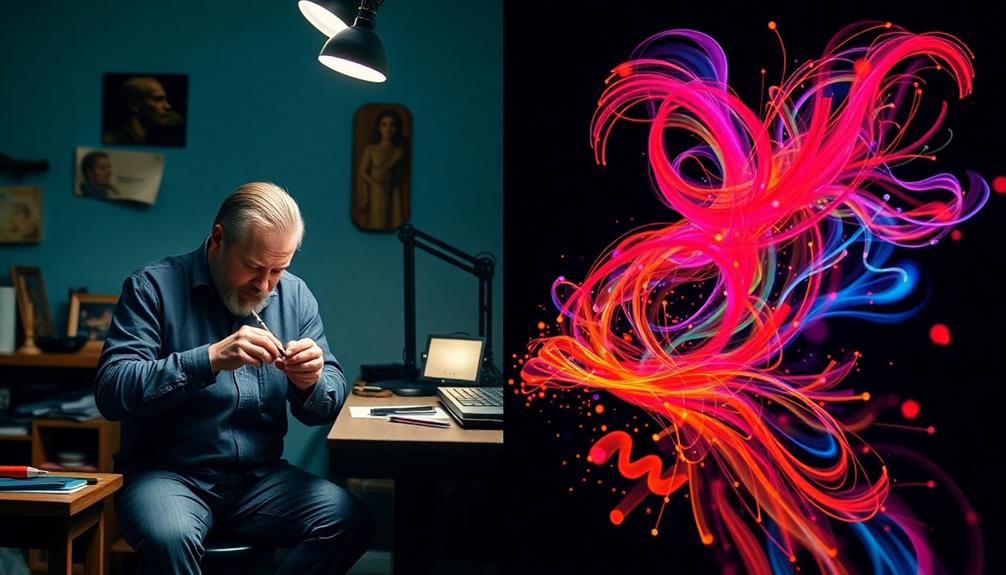
In the world of body modification, the choice of piercing technique and tools can considerably impact your experience and healing process. Understanding the differences helps you make an informed decision. Here's a comparison:
| Technique | Pros | Cons |
|---|---|---|
| Freehand Piercing | Increased flexibility and comfort | Requires skilled piercers |
| Traditional Needle | Precision and reduced trauma | More training needed |
| Piercing Guns | Convenient for earlobe piercings | Causes blunt force trauma |
| Single-Use Hollow Needles | Precise openings, faster healing | Requires professional use |
Freehand piercing stands out for its flexibility, allowing the piercer to adjust placement based on your anatomy. Traditional needle piercings are favored for their precision, creating cleaner openings than piercing guns, which can inflict significant tissue damage. Piercing guns may seem convenient, but they're discouraged by organizations like the APP due to safety concerns. On the other hand, single-use hollow needles are the industry standard, offering precise openings without excessive tissue removal, leading to quicker healing times. Ultimately, choosing the right technique and tools can profoundly influence your piercing experience.
Building Client Trust and Communication
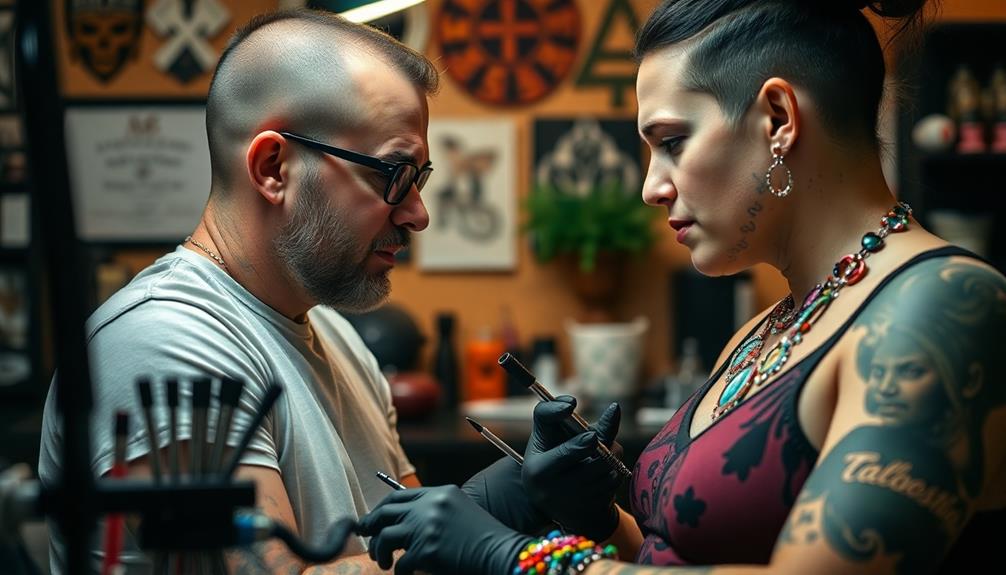
Trust plays an essential role in the relationship between piercers and clients, markedly enhancing the overall experience. When you're getting pierced, effective communication helps clarify the process and safety precautions.
As a client, it's vital to ask questions about the procedure and aftercare. This transparency guarantees you understand the risks and empowers you to make informed decisions.
An ethical piercer will walk you through the entire process, making you feel comfortable and informed about your choice. They should discuss potential side effects and emphasize the importance of ongoing communication.
If you know what to expect, you're more likely to have a positive experience.
Building trust also involves sharing contact information, like an E-mail Address, for any follow-up questions or concerns. This Axiom of accessibility signifies that your piercer values your well-being and is committed to your satisfaction.
Knowledgeable clients tend to adhere better to aftercare recommendations, guaranteeing a healthier healing process. By fostering open dialogue and trust, you can enjoy a more relaxed and fulfilling experience in your body modification journey.
Frequently Asked Questions
Is Free Hand Piercing Better?
Freehand piercing can offer better customization and potentially faster healing, but it requires a skilled piercer. You should weigh the pros and cons, and consult with an experienced professional to determine what's best for you.
What Is the Free Hand Method of Piercing?
The freehand method of piercing feels like an artist painting on a blank canvas. You see a skilled piercer intuitively finding the perfect placement, using only their experience to guide the needle with precision and care.
What Are the Pros and Cons of Piercings?
Piercings can enhance your style and self-expression, but they come with risks like infection and healing complications. It's essential to weigh the aesthetic benefits against potential pain and maintenance before making a decision.
What's the Most Non Painful Piercing?
For the least painful piercing, you should consider earlobe piercings. They're often rated a 1 or 2 on the pain scale, making them a popular choice for beginners who want a relatively comfortable experience.
Conclusion
In the domain of body art, freehand piercing stands as a double-edged sword, offering both a canvas of creativity and potential risks. While the fluidity of this technique can breathe life into your piercing experience, it's essential to weigh the pros and cons carefully. Trust your instincts and the expertise of your piercer, and together, you can transform mere skin into a masterpiece that tells your unique story. Embrace the journey, and let your body shine.
Hi, my name is Danielle, and I’m an author for piercings-body.com. I have a passion for writing and love to share my knowledge on all things body piercing-related. I’m also a huge advocate for safe body modification practices and believe everyone should be able to make informed decisions about their bodies. When I’m not writing or blogging, I enjoy spending time with my family and friends, practicing yoga, and exploring new places.

